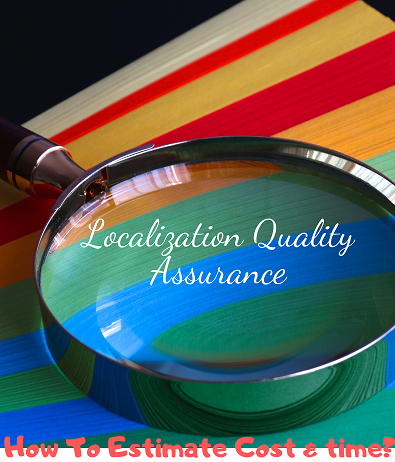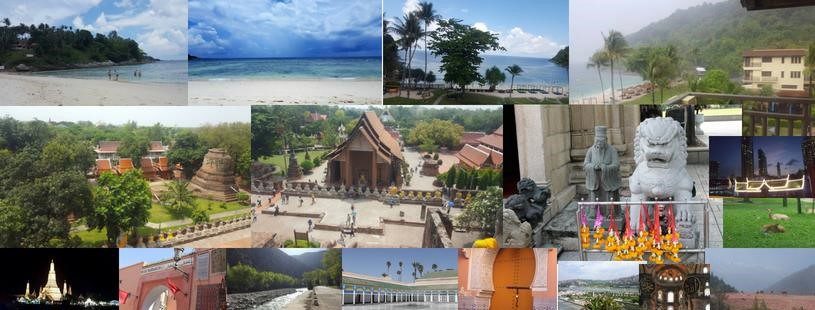
Testing vs Quality Assurance (QA)
First of all, and before digging into the Localization Quality Assurance details, it is important to clarify that Testing is not QA. Many use both terms as synonyms which is wrong. Quality Assurance (QA) is about preventing errors while testing is about finding the errors. For example, if you are reviewing the requirements of a project and you find issues, this is Quality Assurance because by solving these problems you are preventing errors during the next phases of the project development cycle.
What is Quality?
Quality is simply used to reflect the level of customer satisfaction of a product regardless if it is software, a translation, or a service.
What is Linguistic QA?
Linguistic QA is a process that deals with the localized content itself regardless of the medium that will display it. It measures the quality of the translated content from a linguistic perspective. It also cares about how much the localized content can transfer a message to be easily understood by the audience of the target language (culture correctness).
Localization QA (the broader definition)
Besides the Linguistic QA (LQA), Localization QA does not only measure the linguistic aspects of translation but bypasses it to anything else like assets (images, pdfs, videos, etc…) to make sure that all the content is in harmony with the culture of the audience.
How to enhance the Localization QA?
- Cooperation between the localization company and the product owners to develop, maintain, and agree upon a robust Glossary of Terms and a Style Guide at the beginning of a project. Thus, the localization process can be managed and evaluated based on a solid basis.
- Develop automated approaches and rules to detect how much of the translation follows the glossary and style guide. This will create a practical matrix that can be used to evaluate the quality of the translation based on the severity of penalties of each case.
- Post Online QA for web, software or mobile projects enhance the quality of the content because the reviewer can evaluate the translation within the context (web page, mobile screen, etc…)
How can we estimate the Quality Assurance time and cost for a project?
To estimate the Localization QA time and cost, we can feed some matrices with some inputs and evaluate the result. As accurate as the data input is, the results will be correct. These matrices can be developed and maintained simply using an excel file. This can also be more complicated and need advanced math scripting to reduce risks and predict accurately the output values.
Practically at the beginning, the process of developing such matrices can be a complex mission but remember these templates are reusable and will save a lot of time when applied for any other projects: Here is a simple scenario;
Determine the individual’s quantitative ability to review a certain number of words regardless of any other factors (web, software, translation domain, etc..) Because these factors will be considered separately.
For example, let’s say we have 10000 words and One reviewer. If we estimate that 1 reviewer can edit 1000 words per hour, then the formula will be as following:
1 (reviewer) * 10000 (total numbers of words) = 10 Total estimated hours.
To estimate the total cost: Total Number of Hours * [ your hourly rate for QA] = Total cost.
The above is a very basic approach but in reality, there are a lot of other factors depending on the type and the complexity of a project. Let’s take some examples:
Localization and Desktop Publishing project
In such type of projects, besides the total cost and time calculated based on the words count, there are additional factors such as:
- Whether or not the client will provide the source of the art like Indesign, PSD or the internal team will have to recreate it.
- Number of Images/assets
- The complexity of the design
Technical projects (Web, Software, Mobile)
These are more complex types of projects and the QA estimation metrics should include other factors such as:
- Number of use cases to check
- The workflows complexity level.
- Localization readiness ( Internationalization ready, Database, search queries, etc…)
- Number of screens (in software or mobile apps)
- Hardware/devices (Mobile apps may require different types of devices in order to install it and apply the QA process)
- Online stability and server performance( for websites, Content Management Systems, etc..)
- Type of QA reports and QA issues tracking techniques.
- The number of QA rounds.
- The number of meetings with the product technical teams.
Nowadays, Machine Translation is taking the lead in the localization industry, and based on this a new type of QA is being raised. The estimation of Human Post Edit tasks represents a challenge due to a lot of new complex factors related to Auto-translation processes. But as Machine learning progresses, the estimation will be easier and more efficient.
In the next article, I will try to link between the specifications of the localization QA and the different types of technical testing methodologies and techniques.
Feel free to leave a comment or to Contact Me for an open discussion!
